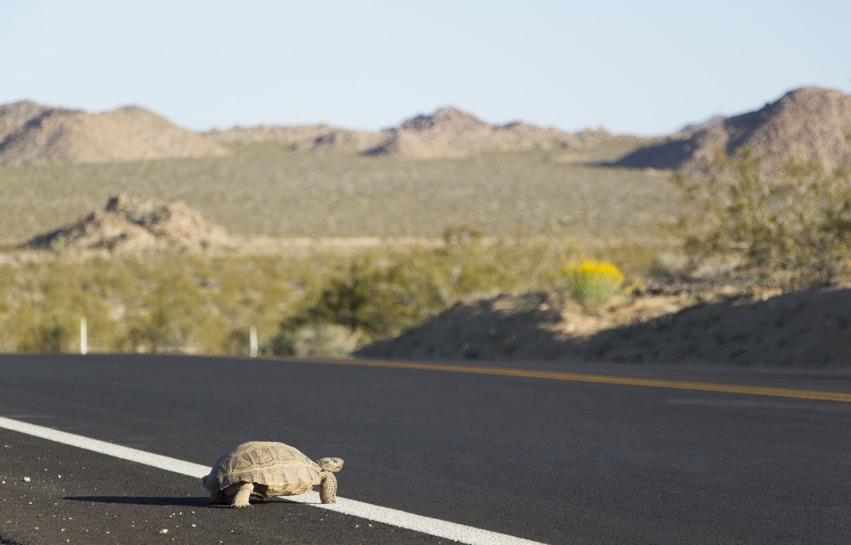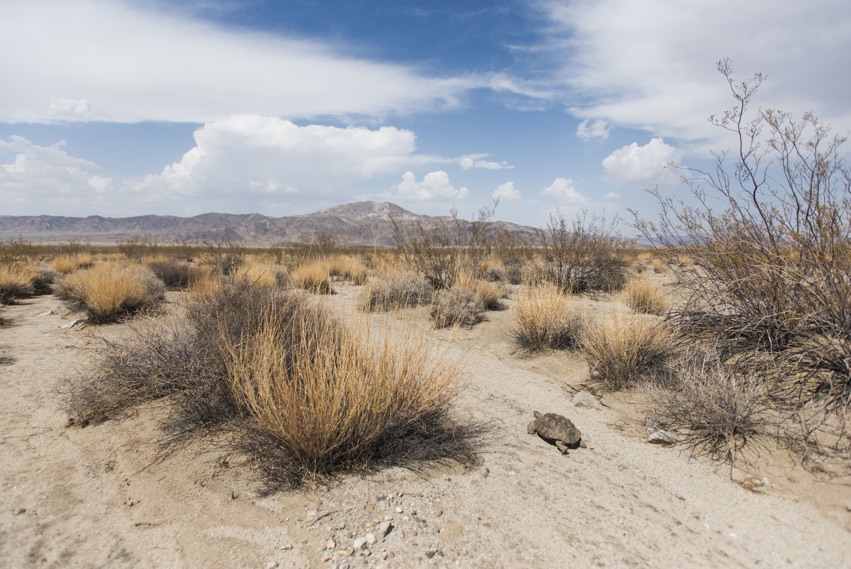In Photos: Awe-Inspiring Desert Tortoises of the American West
Flipping defense

The desert tortoise is usually a solitary animal, except during mating season. Then, both male and female tortoises of the same sex will fight each other when they cross paths. Males are especially combative at this time and use a structure known as a gulag scute, which grows outward under their neck from their shell, to ram and flip over a potential male rival. A flipped male has not only lost the battle but if he cannot right himself, he will die from the heat of the desert sun.
Losing habitat

Like many species of wildlife, the greatest threat to the desert tortoise is loss of habitat due to human activity and development. In some areas of the American deserts, the desert tortoise population has decreased by 90 percent. Vehicle traffic both on highways and on the open desert are especially damaging to the tortoise population. In the Western Mojave Desert, a study showed that the desert tortoise population is, on average, 200 adults per square mile. Today, that number is thought to be just five to 60 adults per square mile.
Adapting to life

The deserts of North America are inhabited by many species of plants and animals that have adapted well to the extreme temperatures and dry conditions found across this vast landscape. The desert tortoise is just one such splendid example of life's ability to acclimate to any environment. Conservation projects are ongoing in the United States and Mexico to assure that the desert tortoise is a part of this amazing desert ecosystem forever.
Get the world’s most fascinating discoveries delivered straight to your inbox.


